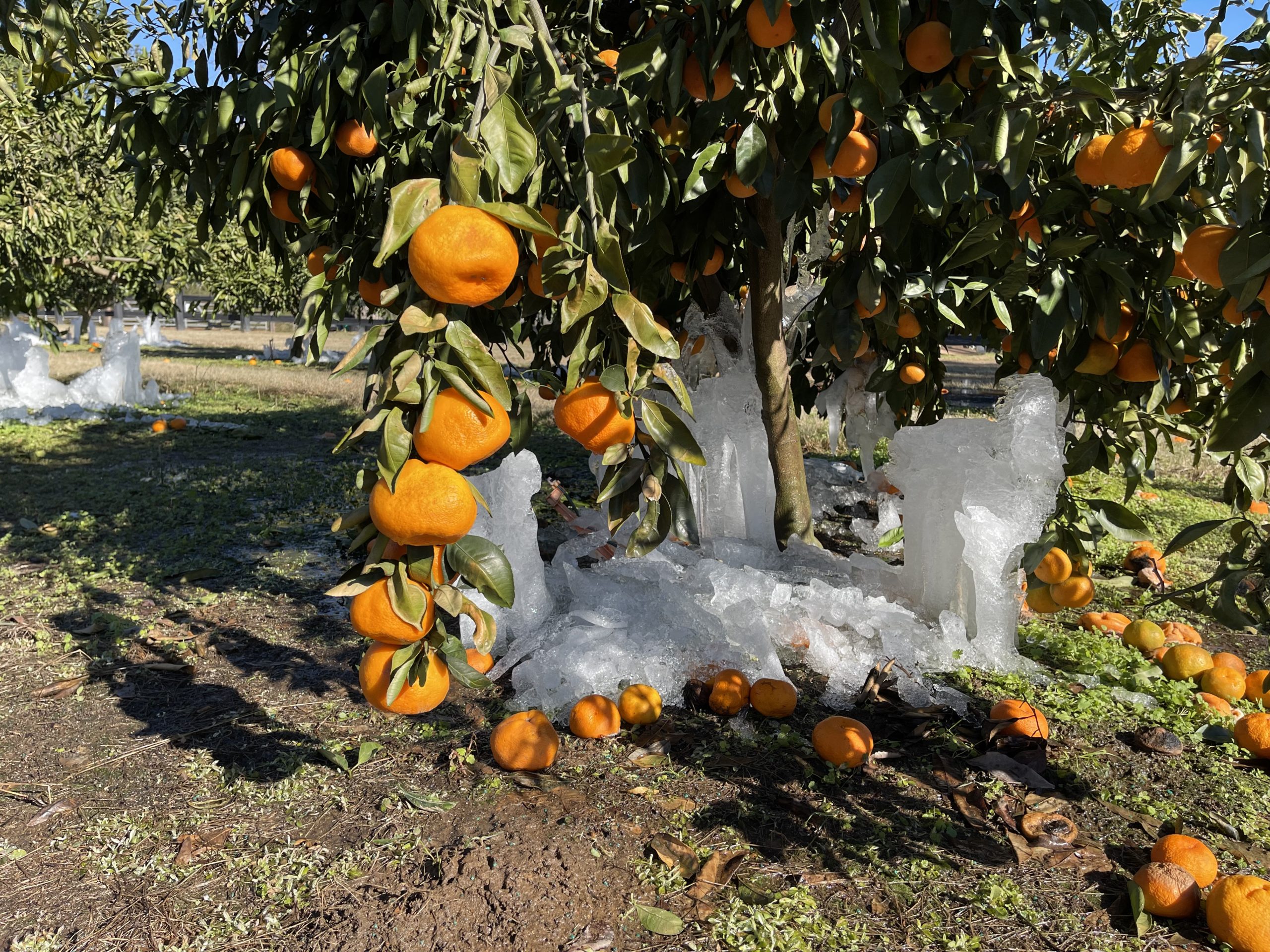Ochlocknee, GA
Here in this citrus grove in Southwest Georgia, a battle took place – a battle for survival as the Christmas week arctic blast brought frigid wind and temperatures to the area colder than any they’ve seen in years, which meant growers, like Lindy Savelle, who owns and operates Georgia Grown Citrus, had to spring into action – working day in and day out to freeze protect their trees if she wanted them to survive.
“We freeze protect our trees using a Microjet that puts out fourteen gallons per hour per tree, and it’s the making of ice that creates biothermal units that keeps, keeps the temperature of the bud union of the tree from freezing. It’s so counterintuitive, but it works. And so, it was uh, quite incredible. We ran the system day after day without turning it off, but here on our farm, we turn it on at thirty-six and we don’t turn it off until it gets up to thirty-six, sometimes thirty-eight, depending on the chill factor. But it is huge to freeze protect these trees, um, I don’t know how you would really survive without doing something to protect them,” says Savelle.
For the most part, Savelle believes they faired pretty well, as they only lost a little bit of fruit on the trees left from harvest and had a few broken limbs, but much of the foliage looks as though it’s been burned, which Savelle says will have to be cut back and will most likely effect next year’s production.
According to Savelle, “When it’s frozen and it starts to thaw out, things start to happen. So, it takes time to reveal that. But say we had to cut back the whole, all of the foliage that’s on this tree or cut back the limbs because of burn back, that will affect production next year because you’re cutting off the production part of the tree. So, it could affect us that way. I don’t think for our Satsumas, we’re going to see a lot of production drop. But some of these other varieties, like the grapefruit, the Tangos, those sorts of things, and certainly any tree that was still putting on new growth; all of that’d be burned and have to be cut off. And that’s where you lose your production is anytime you have to cut limbs off, you’re going to lose volume.”
For now, though, Savelle believes that it’s just a waiting game, as they won’t know the full impact for a few weeks and still have two whole months of Winter weather ahead of them.
“Recovery’s just going to be looking and watching for the next few weeks. We won’t start cutting on these trees or trimming back anything. There’s really not much we can do until the Spring because who knows what January and February will hold for us. Because anytime you do anything to the tree, it’s waking it up. It’s not allowing it to stay dormant. And that’s what you want, you want it to stay dormant. And it’s likely that we’ll have another event, hopefully not this brutal, but it’s always a possibility in Georgia, we’re going to have a freeze event. So we just, you’re in the watch mode for the next two months really, uh, just to see what kind of damage you might have had and um, just kind of the wait and see,” says Savelle.

